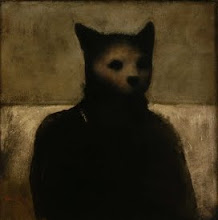 I was looking through a book I bought in a used book store a couple of years ago, The Art of Holding, by Marc Tedeschi. It’s a good book for joint locks and contains many, many images and defense sequences. Tedeschi has a hapkido background, although the book would be a good fit in any martial artist’s library, especially anyone interested in jujitsu. What I like about Tedeschi’s technique, at first glance, is his use of the small circle. It immediately made me think of the legendary Professor Wally Jay, a man who is now in his 90s, who has impacted the world of budo as much or more than any other teacher in the past century. He developed the Small Circle Jujitsu style, which is known for its simplicity and excruciating pain. Bruce Lee is one of many who took notes from Professor Wally Jay.
I was looking through a book I bought in a used book store a couple of years ago, The Art of Holding, by Marc Tedeschi. It’s a good book for joint locks and contains many, many images and defense sequences. Tedeschi has a hapkido background, although the book would be a good fit in any martial artist’s library, especially anyone interested in jujitsu. What I like about Tedeschi’s technique, at first glance, is his use of the small circle. It immediately made me think of the legendary Professor Wally Jay, a man who is now in his 90s, who has impacted the world of budo as much or more than any other teacher in the past century. He developed the Small Circle Jujitsu style, which is known for its simplicity and excruciating pain. Bruce Lee is one of many who took notes from Professor Wally Jay.Anyway, it was with these thoughts that I found something in Tedeschi’s book that I had never before noticed. It was a dedication, at the beginning of the book, to none other than Professor Wally Jay, praising him as “a generous and innovative teacher who helped me perceive the common threads that run through all martial arts.”
Apparently, my thoughts weren’t far from the mark.
Here’s a bit more about Small Circle theory from Professor Leon Jay, Wally’s son, and second grandmaster of the style:
“Small Circle has been brought to kung fu, karate, martial arts of all styles and people with no martial arts background. We’re not just stuck in one place – Judo, or Ju-jitsu. It works across the board; there’s Aikido and Savate and Silat – it transcends stylistic differences.
“One of the key elements is about not having to use massive amounts of power to control people – we control them with as little effort and, therefore damage to them, as possible.
“Students take on board the 10 principles that Dad drew up and apply them to their own systems. There’s balance, avoiding head on collision of forces, mobility and stability, mental resistance to an attack, concentrating the maximum force to the smallest point, energy transfer, the two-way action of the fulcrum and lever and making a base, sticking to your opponent and feeling what he’s doing, rotational movement, and transitional flow – where you can flow from one technique into another effortlessly.” (from an interview at Smallcirclejujitsu.com)

No comments:
Post a Comment